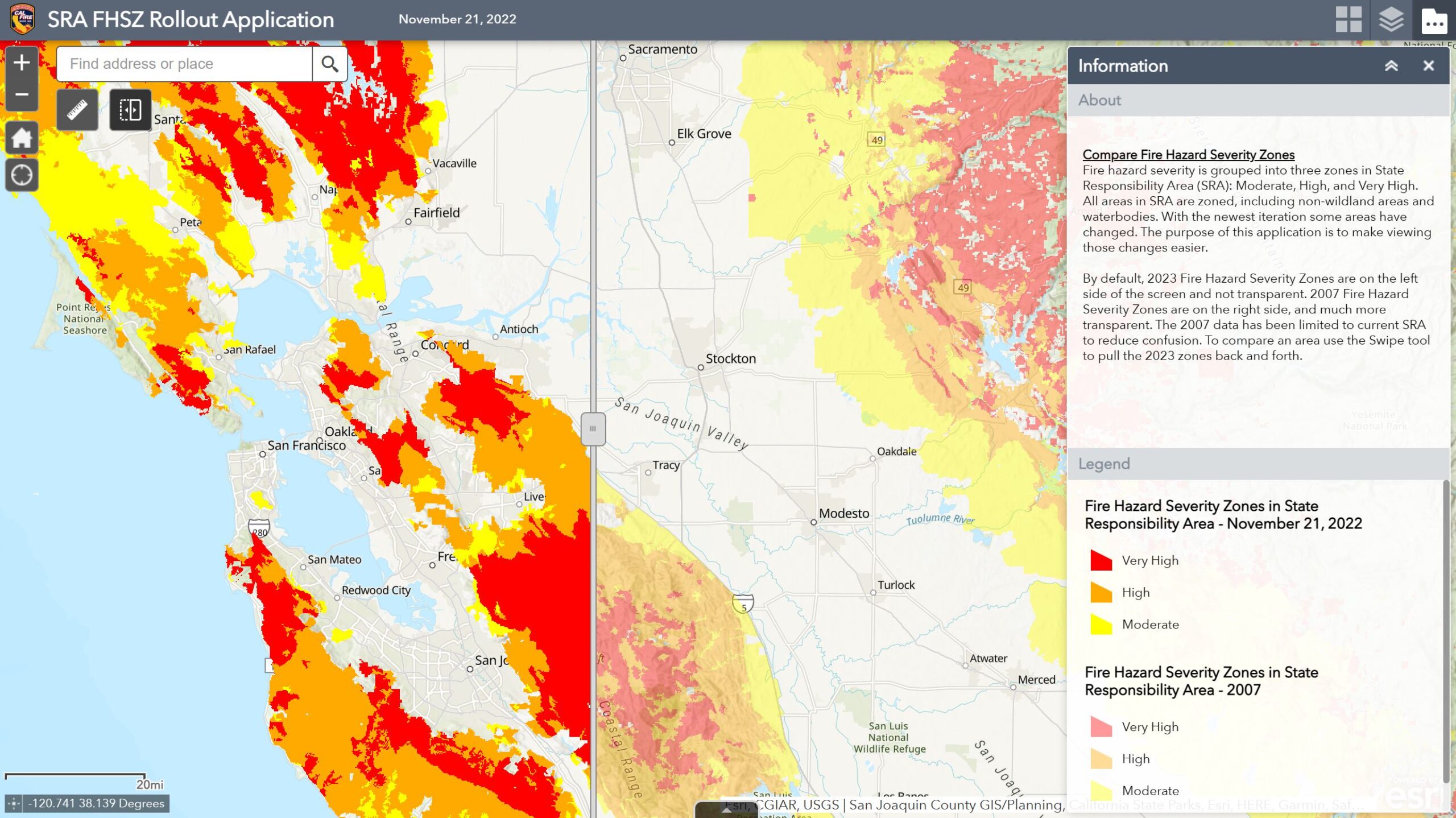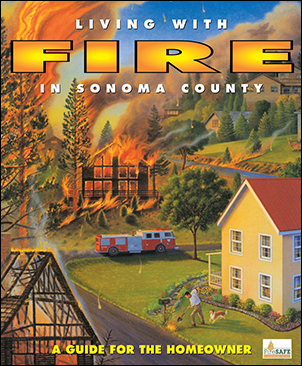
This post has been updated to include the latest 2022 Maps.
Wildfire zone risk in California has become a huge concern for all of us, whether we are homeowners, Association members, or Insurance companies. For safety and insurance reasons it’s important to know your proximity to the higher risk wildfire zones and how the new 2022 map may have changed your risk assessment from the previous 2007 map.
This post answers 3 key questions:
- How can you see and understand your wildfire risk level?
- What are the top tips on creating defensible space?
- What does the future hold for Single Family Owners and Association Homeowners in Wildfire Areas?
1. Understand Your Wildfire Risk Level – See Your Proximity to Wildfire Zones
One way is to look at your proximity to a wildfire zone in publicly available data. The California Department of Forestry and Fire Protection’s Fire and Resource Assessment Program (FRAP) assesses the amount and extent of California’s forests and rangelands, analyzes their conditions and identifies alternative management and policy guidelines. Click on the Fire Hazard Severity Zones map above.
The viewer will display the California Fire Zone Hazard Map in a new browser tab. Zoom and pan to your location or enter your full address to automatically zoom there. The new map, linked above, also has a ‘slider’ tool that will ‘slide’ the 2022 map over the 2007 map to easily see what has changed. Fire hazard severity levels are still grouped into three zones in the State Responsibility Area (SRA): Moderate, High, and Very High. By default, 2022 Fire Hazard Severity Zones are on the left side of the screen and not transparent. The 2007 Fire Hazard Severity Zones are on the right side, and much more transparent. Their color schemes are slightly different as shown in the legend/key.
Instructions to Use the Map
- Click on one of the above Links to view the Fire Hazard Severity Zones map
- On the new map use the ‘Find Address or Place’ search box, on the old map, click on the tiny Binocular Icon on the upper left side of the page
- Enter your property address, full address, city, state, and zip code, for example, 455 10th St. Davis, CA 95121
- Zoom in or out (using the + and – icons) to see the area you are interested in including the nearest shaded Fire Hazard Zones
- Click on the ‘slider’, then move it left and right to compare the new 2022 map vs. the previous 2007 map
- The legend/key shows the risks by color. Red means Very High Risk. Orange means High Risk. Yellow means Moderate Risk. Areas outside these wildfire zones aren’t colored.
2. What Are the Top Tips on Creating Defensible Space?

One of the best guides we’ve seen is this one, available for download here.
3. What Does the Future Hold for Single Family Owners and Association Homeowners in or near a Wildfire Zone?
Will insurance rates get worse, better, or stay the same? As well as the maps above, insurance companies procure regularly updated fire risk maps from specialist suppliers. Those maps aren’t publicly available. Different insurance companies evaluate their individual risks, and competition between them ensures the wildfire risk is priced appropriately. Sometimes, a non-renewal by one company can be acceptable to another company! For example, I have found Travelers says one area is high wildfire risk, and Farmers says it is moderate wildfire risk. The drought of recent years has increased wildfire risks, but, on the other hand, the systems that have caused wildfires are being hardened and vegetation better managed.
Call me if you’d like to discuss your wildfire risk level and coverage. Also see this blog post: Home Reconstruction Cost: How Much Coverage Do You Need?
